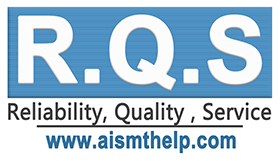110 Points the most Useful Knowledge of SMT (Part 1)
110 Points the most Useful Knowledge of SMT (Part 1)
1. Generally, the temperature specified in the SMT workshop is 25 ± 3 ° C;
2. When preparing solder paste, the materials and tools required for solder paste, steel plate, scraper, wiping paper, dust-free paper, cleaning agent, mixing knife;
3. The commonly used solder paste alloy composition is Sn/Pb alloy, and the alloy ratio is 63/37;
4. The main components of the solder paste are divided into two parts: tin powder and flux.
5. The main role of flux in soldering is to remove oxides, destroy the surface tension of molten tin, and prevent reoxidation.
6. The ratio of the volume of tin powder particles to Flux (flux) in the solder paste is about 1:1, and the weight ratio is about 9:1;
7. The principle of access to solder paste is first in, first out;
8. When the solder paste is used in the opening, it must be warmed and stirred after two important processes;
9. Common manufacturing methods for steel plates are: etching, laser, electroforming;
10. The full name of SMT is Surface mount (or mounting) technology, which means surface adhesion (or placement) technology in Chinese;

11. The full name of ESD is Electro-static discharge, which means electrostatic discharge in Chinese;
12. When making an SMT device program, the program includes five parts, which are PCB data; Mark data; Feeder data; Nozzle data; Part data;
13. The melting point of lead-free solder Sn/Ag/Cu 96.5/3.0/0.5 is 217C;
14. The relative humidity of the parts drying oven is < 10%;
15. Commonly used passive components (Passive Devices) are: resistors, capacitors, point sense (or diode), etc.; active components (Active Devices) are: transistors, ICs, etc.;
16. The commonly used SMT steel plate is made of stainless steel;
17. The thickness of the commonly used SMT steel plate is 0.15mm (or 0.12mm);
18. The types of electrostatic charge are friction, separation, induction, electrostatic conduction, etc. The effects of electrostatic charge on the electronics industry are: ESD failure, electrostatic pollution; the three principles of static elimination are static neutralization, grounding, shielding.
19. Inch size length x width 0603 = 0.06inch * 0.03inch, metric size length x width 3216 = 3.2mm * 1.6mm;
20. Exclusion ERB-05604-J81 8th code “4” is represented as 4 loops with a resistance of 56 ohms. The capacitance of the capacitor ECA-0105Y-M31 is C=106PF=1NF =1X10-6F;

21. ECN Chinese full name: engineering change notice; SWR Chinese full name: special demand work order, must be signed by all relevant departments, file center distribution, to be effective;
22. The specific content of 5S is Sort, Straighten, Shine, Standardize, Sustain;
23. The purpose of PCB vacuum packaging is to protect against dust and moisture;
24. The quality policy is: comprehensive quality control, implementation of the system, quality of customer demand; full participation, timely processing, to achieve zero shortcomings;
25. The policy of quality three is: not accepting defective products, not manufacturing defective products, and not discharging defective products;
26. In the QC seven methods, 4M1H refers to the cause of fish bones (Chinese): people, machines, materials, methods, and environment;
27. The composition of the solder paste contains: metal powder, solvent, flux, anti-sagging agent, active agent; metal powder accounts for 85-92% by weight, and metal powder accounts for 50% by volume; The composition is tin and lead, the ratio is 63/37, and the melting point is 183 ° C;
28. When using the solder paste, the temperature must be removed from the refrigerator. The purpose is to return the temperature of the refrigerated solder paste to normal temperature for printing. If the temperature is not returned, the defect that is easily generated after the PCBA enters Reflow is tin beads;
29. The file supply mode of the machine includes: preparation mode, priority exchange mode, exchange mode and quick connection mode;
30. SMT PCB positioning methods include: vacuum positioning, mechanical hole positioning, bilateral clamp positioning and edge positioning;
31. The silk screen (symbol) is a resistance of 272, the resistance is 2700Ω, and the sign of the resistance of 4.8MΩ (screen printing) is 485;
32. The silk screen on the BGA body contains information such as the manufacturer, manufacturer’s item number, specifications, and Datecode/(Lot No);
33. The pitch of 208pinQFP is 0.5mm;
34. In the QC seven methods, the fishbone diagram emphasizes the search for causality;

Still not finished,please wait next Post ,thanks……

